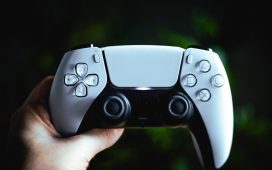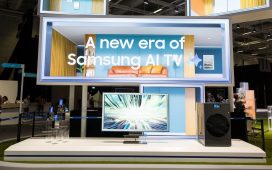2023 was a solid year for Google as it expanded its ecosystem of mobile devices. The Pixel 8 series brought some key upgrades that helped continue Google’s ascension in the premium smartphone market. Pixel Fold marked Google’s first foray into the foldable world while the Pixel Tablet was the final piece in Google’s mobile ecosystem.
It wasn’t all smooth sailing for Google though so let’s look at both the positives and negatives from the past 12 months.
Winner: Pixel 8 series
The Pixel 8 duo are Google’s most competitive flagships to date. Both phones got some notable hardware upgrades like brighter displays with slimmer bezels, new Tensor G3 chips and updated ultrawide lenses. The signature Pixel design was slightly revised with the visor on the 8 Pro now housing all three cameras and both phones did receive a bump in battery capacity though their endurance is still behind that of Samsung and Apple flagships.
Pixel 8 finally got a 120Hz refresh rate and the added temperature sensor on the 8 Pro is a nice party trick but two things separate Pixel from just about any other Android phone – cameras and software.
The Pixel camera experience is arguably the killer feature here and it got better in both hardware and software with the new ultrawide cameras and expanded AI features like Best Take, Magic Editor and Photo Unblur. The AI capabilities also expanded to the software side with the new generative AI wallpaper creation tool as well as Pixel staples like call screening, real-time translation, and voice-to-text dictation.
Another key addition with the Pixel 8 series is their guaranteed 7 years of spare parts and software updates which would set a new benchmark for smartphone support. More on that later.
The Pixel 8 and 8 Pro tick a lot of the right boxes for a flagship device. We hope Google will stop limiting its software features outside its core markets and expand to more regions in the coming year.
Winner: Longer software and hardware support
Backing up your new devices with longer software and hardware support is one way to stand out even though this is now required by law in Google’s home state of California. With the launch of its Pixel 8 devices, Google officially expanded its software support to 7 years. That means Pixel 8 and 8 Pro will be eligible for up to 7 Android OS updates – that’s Android 21 or whatever it ends up being called in 2030.
This is a major win for consumers around the world and we can only hope more Android OEMs will follow a similar approach with their upcoming flagships. The only drawback is that older Pixels won’t get the same 7-year promise since the new software support is for devices running the Tensor G3 chip.
The right-to-repair movement also led Google to promise 7 years of spare parts availability for its latest flagships. This deserves praise, especially since more users are sticking to their phones for longer and they can now do so knowing repairs will be readily available.
Loser: Tensor G3
Despite all the effort Google puts into its custom Tensor chips, they’ve historically fared worse in performance and power efficiency compared to their flagship Qualcomm and Apple counterparts. While the Tensor G3 is Google’s best chip yet, it still falls behind the Snapdragon 8 Gen 2 and Apple A16 chips from last year and that difference is only more noticeable with the newer crop of competing SoCs.
As it stands, Tensor G3 is the Achilles’ heel on the Pixel 8 series with sustained CPU and GPU tests show throttling in mere minutes and performing even worse than previous generations Tensor chips. Hopefully, Google will remedy its mistakes with the Tensor G4.
Winner: Pixel Fold
After years of waiting, Google finally delivered its first foldable phone in 2023 with the uninspiringly named Pixel Fold. The device not only certified Google’s commitment to the future of foldables but it also showed how one should look from the Android maker’s own perspective.
Pixel Fold is one of the most beautiful phones to launch in the past year bringing that signature Pixel design to a compact “book-type” folding phone. Despite its 5.8-inch diagonal, the wide cover screen makes typing and navigating the UI that much easier when it’s folded while its 7.6-inch main screen leaves plenty of room for multitasking and media consumption.
The trio of cameras on the back may not be on the level of the Pixel 8 Pro or its predecessor but you still get three meaningful lenses with a wide, ultrawide and 5x telephoto. You also get the clean Google software experience with specific optimizations for the foldable form factor and the promise of being first in line for major Android OS updates.
Pixel Fold It does come with the older Google Tensor G2 chipset which can be considered a major drawback and that steep price tag is another big deterrent. Still, we have to give credit to Google for a great first chapter into its foldable phone journey.
Loser: Pixel Watch 2 charging situation
Pixel Watch 2 is a notable improvement over its predecessor with a faster chipset and improved battery endurance but Google decided to opt for an entirely new charging solution making older chargers non-compatible.
Google opted for a new pogo-pin charger for the Pixel Watch 2 which while shared with Fitbit devices is still as proprietary as it gets. Proprietary charging solutions are quite common in the smartwatch and smartband market but not offering support for the common Qi wireless standard is a big disappointment in our eyes when we know that smartwatches from other brands can easily top up their batteries with Qi wireless chargers.









